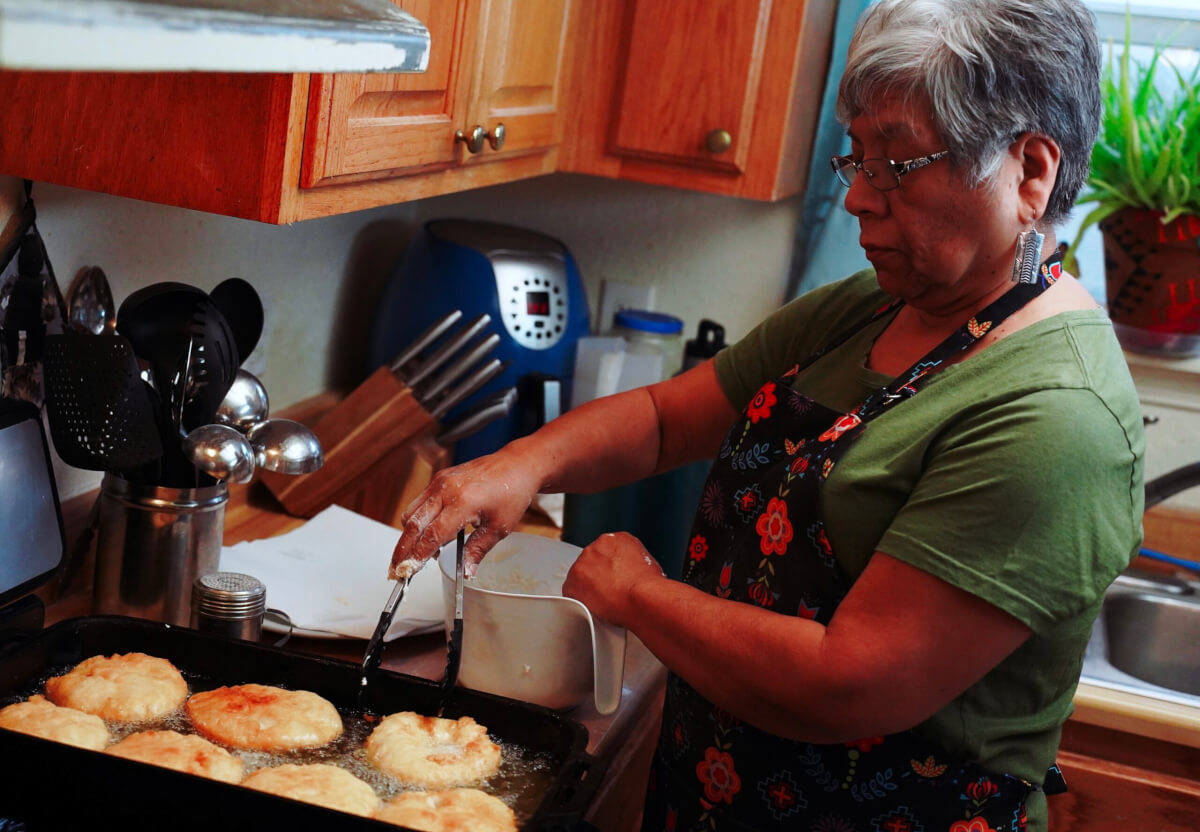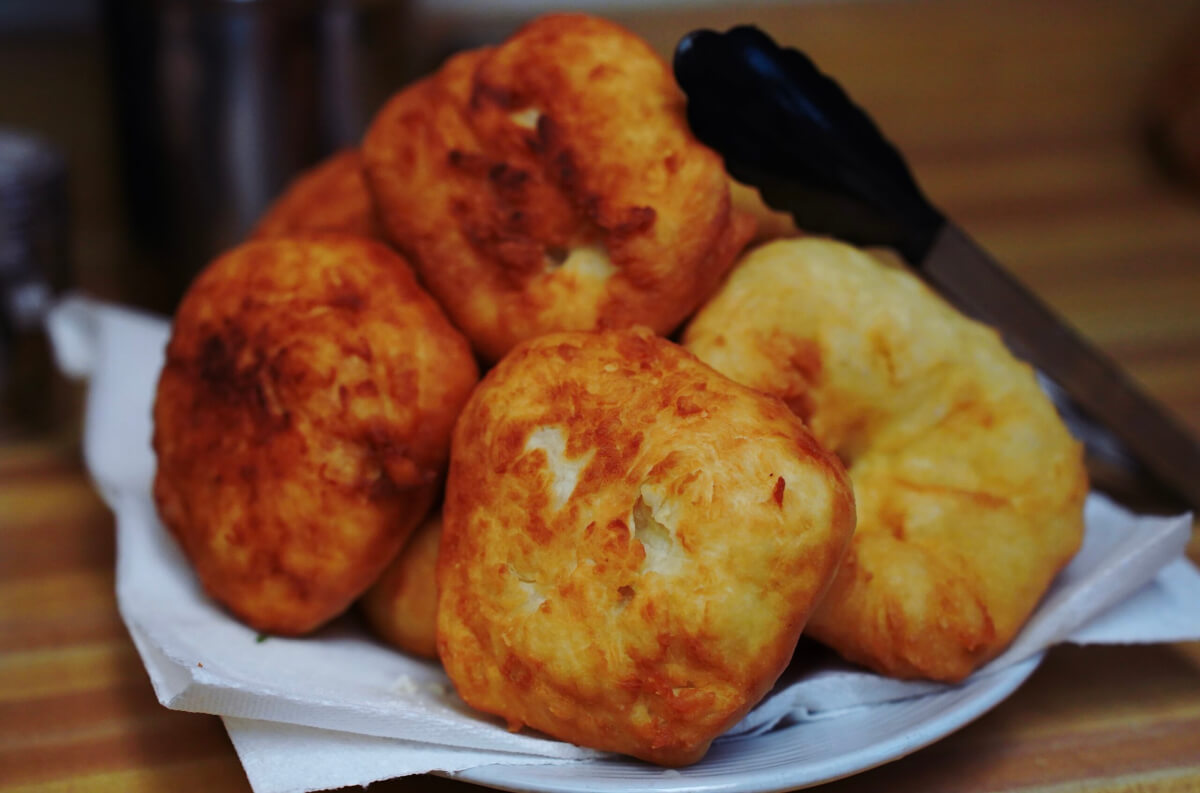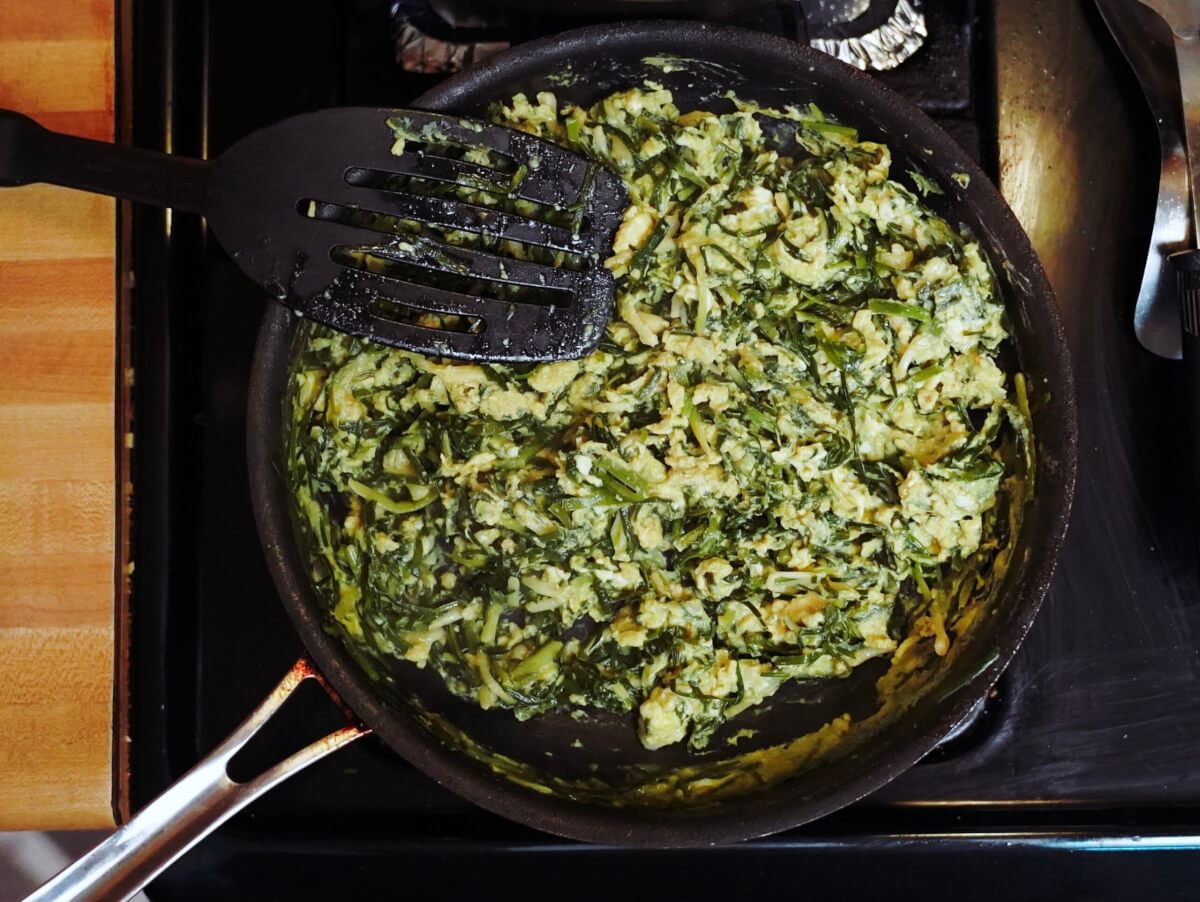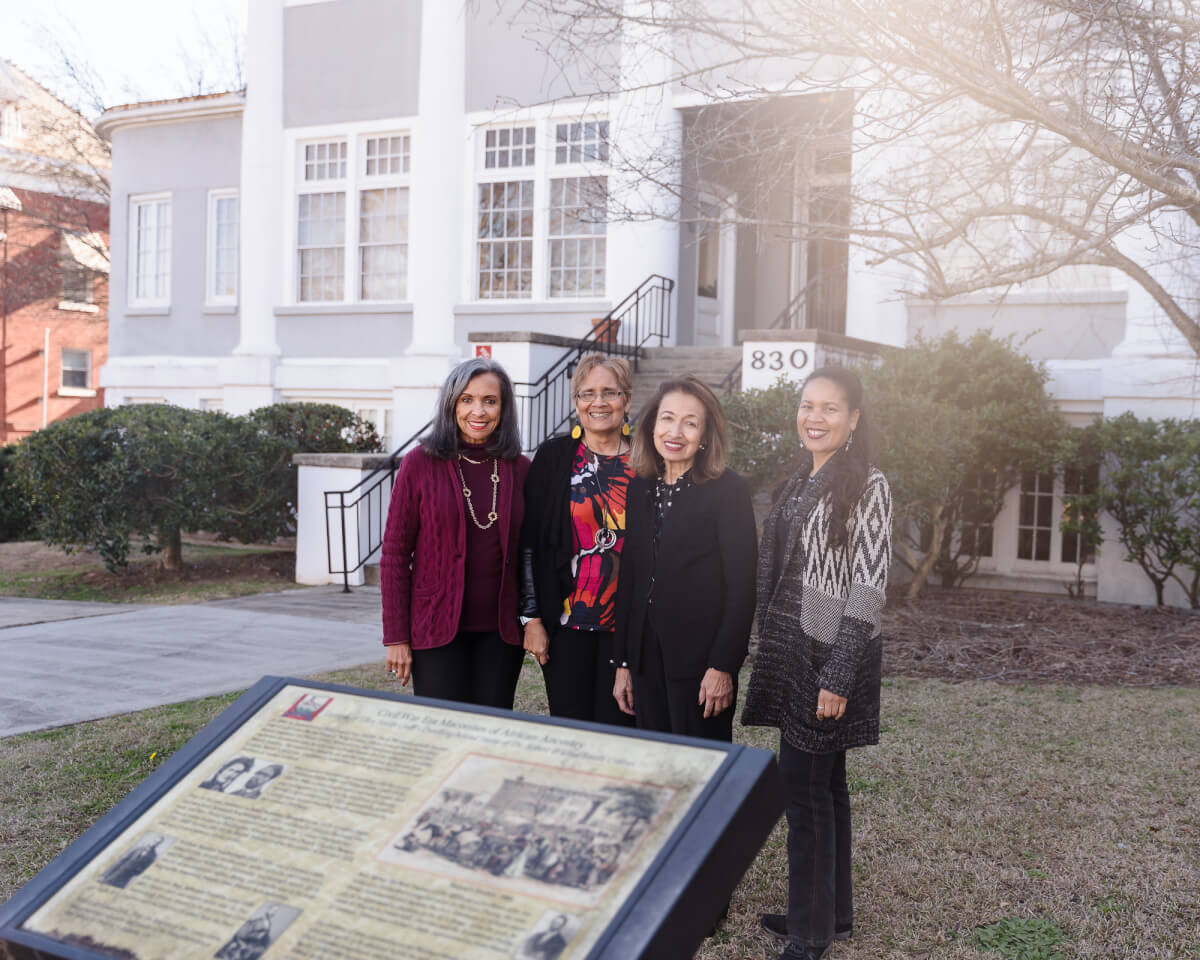
Where the wild onions grow
By Melissa Harmony Apel
Photography by Ryan Hill
Take an early spring walk near the Ocmulgee River or any of Macon’s low-lying areas, and it’s likely you’re walking right over one of Georgia’s prime foraging opportunities. To the untrained eye, their long, green leaves can be mistaken for a patch of grass. But just below the moist soil is a sweet and earthy food. It’s a root vegetable that the indigenous people of this area, the Muscogee Creek and Yuchi (or Euchee), were foraging well before their forced removal to Oklahoma in the 1830s. And it’s a food they continue to pick and cook today in Oklahoma: tafvmpvce, or wild onions.
“I can probably pick wild onions blindfolded,” said Joanna Lowe (Muscogee Creek and Seminole), 65, from Glenpool, Oklahoma. Wild onions are found anywhere the ground stays moist, like creek beds and rivers. To a less experienced forager, wild onions can look similar to grass or even wild garlic, but for Lowe, there’s no mistaking it.
“The leaves are a different shade of green than anything around it.” And cooking wild onions is as second nature to Lowe as picking them. “Learning how to cook wild onions was like learning how to cook an egg,” she said. “No one had to teach us. We’ve been around it forever.”
 It’s unclear whether the Muscogee Creek and Yuchi people brought these wild onions with them on their journey to Indian Territory (Oklahoma) or if these particular onions were also native to Oklahoma. But for most tribes removed from the Southeastern United States, wild onions continue to be a staple traditional food today. Long ago, the onions were likely used for seasonings and added to different dishes, but today they’re mostly cooked into scrambled eggs during springtime family gatherings, community fundraisers, and after-church dinners. For many Muscogee Creek and Yuchi people in Oklahoma, foraging onions each spring represents much more than just a way to get food. It’s a tradition that connects them to their ancestors and to their pre-removal homelands here in Georgia.
It’s unclear whether the Muscogee Creek and Yuchi people brought these wild onions with them on their journey to Indian Territory (Oklahoma) or if these particular onions were also native to Oklahoma. But for most tribes removed from the Southeastern United States, wild onions continue to be a staple traditional food today. Long ago, the onions were likely used for seasonings and added to different dishes, but today they’re mostly cooked into scrambled eggs during springtime family gatherings, community fundraisers, and after-church dinners. For many Muscogee Creek and Yuchi people in Oklahoma, foraging onions each spring represents much more than just a way to get food. It’s a tradition that connects them to their ancestors and to their pre-removal homelands here in Georgia.
In an online video produced by MVSKOKE Media, Lowe is shown using scissors to clip the leaves into smaller pieces, finally tossing the bulbs into a cast iron pan. “I like to add just a little bit of grease to my onions,” she says. “And not too much water, or the onions will be soggy and lose their flavor.”
“My grandma told me when you can see through the onions, they’re ready.” She pours in a bowl of scrambled eggs and stirs the onion and egg mixture until the eggs are cooked through. “You don’t want to put too much eggs in it because then you’re defeating your purpose,” she explains. “You don’t want the eggs to overcome your onions. You want to get that onion taste because that’s what you wait for. Everybody waits for the onions.”
Another traditional dish that has evolved over the years is grape dumplings. There are differing beliefs about whether the dumplings themselves were eaten by indigenous people prior to their removal from Georgia. But the grape sauce likely was. Cooked into the dumplings and poured over them, it defines the dish’s flavor. Traditionally made from Muscadine grapes native to Georgia, the grape sauce had to be made with possum grapes once the Muscogee Creek and Yuchi people were forced to Oklahoma. “I remember my grandma and aunts sending us kids out to find possum grapes for the grape dumplings,” said Lowe, who grew up in Catoosa, Oklahoma. “But they’re really hard to find, so nowadays we just use grape juice from the store.”

A well-respected cook in her community, Lowe is often asked to cook for ceremonies and family events. And when “Aunt Joanne” cooks, everyone knows it’s going to be good, it’s going to be hot, and it’s going to be ready all at the same time.
Lowe is known for her potato salad, corn soup, chicken and dumplings, and of course, her fry bread, always perfectly cooked, fluffy inside and evenly golden on the outside. Originally a survival food made from U.S. government commodities in the 1800s, fry bread has become a staple food in most Native communities. Recipes vary by region, tribe, and family, and the ingredients for the “best” fry bread can cause contention. But one thing most can agree on is that a cook is only as good as her fry bread.
However, Lowe said it’s not what the bread looks like, it’s what it tastes like. And don’t even ask her about measurements. “I get backed into a corner when someone asks me ‘how much of this or that?’ I say, ‘Well, as much as you want!’”
Lowe’s traditional culinary skills are the result of decades of trial and error. She was just 10 years old when her mom passed away, and as the oldest girl of 14 children, Lowe took on the role of homemaker and caretaker to her siblings. “I had to buy groceries. I had to be the one to do everyone’s laundry. The job of the mom fell on me,” Lowe said. But it was her dad who started teaching her how to cook. And during times when the family didn’t have much in the way of groceries, Lowe remembered that her dad would make it fun. “He’d say, ‘I’m gonna show you how the cowboys ate,’ and we’d have water gravy and cowboy biscuits and fried potatoes.” Although, it took a while before Lowe’s biscuits become edible. “My first batch I ever made were, like, softball size and hard.” She laughed. “My brothers took them down the street and batted them down the road.”

Cooking isn’t just about the necessity of food, though. In most indigenous cultures, the kitchen is a place where life lessons are learned, stories are told, and recipes are passed down from one generation to the next. Lowe said she remembers spending summers with her grandmother and watching her cook over an open fire while all her siblings and cousins ran around or went swimming. Her recipes included sofke, a traditional Muscogee Creek dish made with hominy and lye that predates removal.
“I helped my grandma make sofke growing up…. We made our own lye water. I remember my grandma had this squared off piece of screen and she did it in an old coffee can, put that wood in the can and poured water over it,” Lowe explained. “I used to like to drink sofke when it was really fresh and hot.”
A higher level of reverence comes with cooking during ceremonies. Muscogee Creek and Yuchi women believe that their thoughts and feelings go into the food they cook.
“I always say my prayers before I make that breakfast [for a Native American Church ceremony],” Lowe said. “I try not to let anything negative get in my way.” Lowe added that whether she’s cooking for a ceremony or a community event, she doesn’t have a favorite thing to make. It’s just about doing something to serve other people and make their day a little better. She doesn’t even taste her food as she’s cooking or worry about how it tastes.
“Cooking for other people is like my therapy. I just fix it,” Lowe said. “Put all my love in it and hope it comes out all right.”








